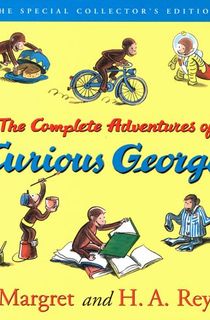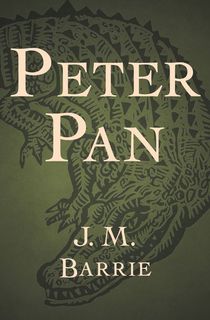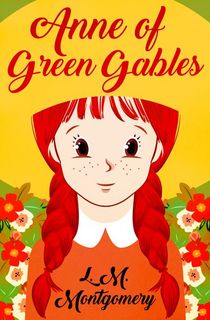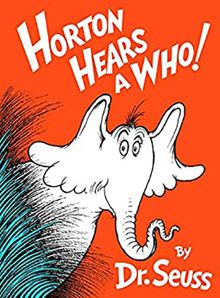Every reader remembers the first book that made them realize they were a “book” person. For some of us, it was the story of the terrific, radiant and humble pig and his web-spinning friend; for others, it was a magical adventure involving tesseracts (or Dust, or Floo powder).
Whether you’re looking for the perfect gift for a child or want to relive some of your own youthful memories, this list of classic children’s books is sure to bring on the nostalgia.
Here’s are all the stories and characters that will remind you of the good ol’ days of your youth—from Harriet the Spy’s tomato sandwiches to Anne of Green Gables’ bright red hair.
Related: Children's Book Quotes to Make You a Book Lover for Life

The Complete Adventures of Curious George
The first Curious George book was published in 1941, and since then generation of children have been enchanted by the good-natured, mischievous monkey (though technically, his lack of tail makes him an ape). The seven original Curious George books were a collaboration between husband-and-wife team H.A. and Margret Rey—H.A. was usually responsible for the ideas and illustrations, while Margret worked on the plot and writing.
This collection of the original books starts with Curious George, in which he found by The Man in the Yellow Hat, and later stories in which he Takes a Job, Rides a Bike, Gets a Medal, Flies a Kite, Learns the Alphabet, and Goes to the Hospital.

Peter Pan
The fear of growing up has never been explored with as much magic as in Peter Pan, the classic children’s book by J.M. Barrie. Peter Pan and Tinker Bell visit the Darling children—Wendy, John and Michael—and whisk them off the Neverland, where children stay children forever.
J.M. Barrie first came up with the story of Peter Pan in 1904, having been inspired by a family he had become friends with. It’s long been a successful play and has had many film adaptations, including the 2020 film Wendy .

Little Women
In case you didn’t know before, Greta Gerwig has proved it to the world: The story of the March sisters is a timeless tale of love, sisterhood, and growing up as a girl. When we first read it, we remember wanting so badly to be as pretty and poised as Meg and as strong-willed and smart as Jo.
We also remember not being old enough to truly understand why she wouldn’t marry Laurie; being so upset with Amy (see: Laurie), and (spoiler alert!) being devastated when Beth dies. It’s a novel that’s 150 years old, and we’re still besotted with the March sisters—if that isn’t a classic children’s book, we don’t know what is.
Related: 13 Books for Fans of Little Women

Anne of Green Gables
Out of all our favorite childhood characters, Anne Shirley is perhaps the one we admire most and would like to be friends with in real life. Published in 1908 by L.M. (Lucy Maud, to fans) Montgomery, the six volume series tells the story of the red-headed orphan who is mistakenly adopted and brought to Green Gables.
Since her creation, Anne has gone on to sell 50 million copies, be translated in 20 languages, and spurred multiple film and television adaptations, even a Japanese anime series. But to us she’ll always just be Anne … of Green Gables, that is.
Related: Educational Books for Kids to Keep Reading Skills Sharp

A Wrinkle in Time
Madeleine L’Engle’s 1963 novel broke barriers, combining the worlds of young adult literature and science fiction. Meg Murry is a smart and stubborn girl, determined to discover the reason behind her scientist father’s disappearance. She gets in over her head when she finds a tesseract—a wrinkle in time—that allows her to travel through time and space.
Though the book is widely understood to have strong religious and Christian undertones, its inclusions of witchcraft and fantasy made A Wrinkle in Time one of the most challenged books, according to the American Library Association. But, in our opinion, that’s what makes it worth reading. It also made A Wrinkle in Time a prime candidate for the 2018 movie adaptation, but sadly, it couldn’t live up to the magic in the book.

The Golden Compass
About three decades after L’Engel published her story about a girl who goes on a miraculous quest to find her scientist father, Philip Pullman published The Golden Compass, a story about...a girl who goes on a miraculous quest to find her scientist father. Of course, the stories are extremely different in many ways, not the least being that Pullman’s version is often considered to be much more critical of religion.
However, that pretty much went over our heads the first time we read about Lyra Belacqua’s fantastical journey to the Arctic in the first book of the His Dark Materials trilogy. We also blame this book for giving us a lifelong desire to have a dæmon, aka a talking animal that is also the physical embodiment of your soul...and for always looking for more fantasy books like His Dark Materials.

Harry Potter and the Sorcerer's Stone
Another modern classic children’s book, it’s undeniable that Harry Potter is one of the biggest cultural touchstones for kids born since 1985 or so. While some groups have banned it for promoting witchcraft, anyone who has ever read the book knows that, despite how awesome Hogwarts its, it’s about much more than magic.
At its core, the Harry Potter novels teach children (and adults) about the power of love, loyalty, and tolerance, and how important it is to choose right over wrong.

Charlotte's Web
Another tearjerker, Charlotte’s Web is a classic children’s book that will undoubtedly stay popular for years to come. Both a coming-of-age tale and an unflinching introduction to the cycle of life, the story goes far beyond the spinning web of Charlotte and her simple friend, Wilbur.
Inspired by a pig E.B. White once tried to save from the butcher’s block, Charlotte’s Web is now one of the most famous children’s books of all time. Though White was better known for his essays in his younger years—he was a writer for The New Yorker—today, Charlotte’s Web is by far his best-known book. His other children’s books, Stuart Little and The Trumpet of the Swan, are also classics in their own right.
Related: Nostalgic Family Movies on Disney Plus to Share With Your Kids

The Giving Tree
Nearly all of Shel Silverstein’s many books for children could go on this list, but we have a soft spot in our hearts for his 1964 book, The Giving Tree, which tells the story of a boy and his beloved tree. The tree gives and gives, and as the boy gets older, his demands grow greater. But no matter what he asks for, the tree always acquiesces.
Though the book has many interpretations—among other things, it has been said to represent environmentalism, the selfishness of humans, or the selflessness of mothers—all we know for sure is that this book still makes us cry.

Harriet the Spy
If you are anything like us, you probably spent an entire summer (okay, year) of your life inspired by the precocious Harriet the Spy, making tomato sandwiches and keeping tabs on everyone in your neighborhood in a spiral notebook.
Like many other classic children's books, Harriet’s escapades were first met with suspicion when the story was published in 1964. However, she has now come to represent a smart role model for young women everywhere.

Horton Hears a Who
It's difficult to pick a favorite Dr. Seuss book—How the Grinch Stole Christmas and The Lorax are also top contenders—but as children, we especially identified with the Whos of Whoville who were struggling to be heard.
Related: The Best Dr. Seuss Quotes to Add Whimsy to Your Day

Matilda
As children, we felt for Matilda, the bookish heroine of Roald Dahl’s 1988 novel. Of course, we were also jealous of the telepathic powers she used when dealing with mean teachers and annoying classmates.
Matilda drew the short stick when it came to her parents, but thanks to her kindred spirit and her teacher, Miss Honey, she becomes the best student in her class and finds a loving home.

Bridge to Terabithia
This 1977 novel about two friends who create an imaginary world to escape all their troubles is a right of passage for all young readers—if you can continue on in life after reading its devastatingly sad and shocking ending. Another beautiful book about the harsh realities of life, Bridge to Terabithia is the perfect introduction to big emotions like loneliness, anger and grief.

Where the Red Fern Grows
Written in 1971 and set during the Great Depression, Where the Red Fern Grows is another classic children’s book that seems designed to make us cry. Billy, a ten-year-old boy living in the Ozark mountains, wants nothing more than to get two coonhounds so he can hunt and help provide for his family.
After saving for two years, he can finally afford the dogs—and soon enough they earn a reputation as the best hunters in the Ozarks. It finally seems like things are going well for Billy and his family, until tragedy strikes. Despite all the tears, we still remember this book as one of the best stories about a kid and his dogs—and one of the books that showed us the power of literature.

The Giver
Lois Lowry’s 1993 novel was one of the most challenged books of the 1990s, despite it winning the Newbery Medal in 1994. The story of a dystopian society in which (almost) all emotional depth has been eradicated, this classic children’s book is essentially an introduction to what it means to be human.
Including complex themes like freedom, individuality and rituals, you probably remember The Giver as the first book you read as a tween that made you really think about how our society works—and if you’re lucky, it was a gateway to other dystopian authors, such as George Orwell and Ray Bradbury.

Ramona Quimby, Age 8
The Ramona Quimby novels had something to relate to whether you were like Ramona, an annoying younger sibling, or like her older, more intelligent sister Beezus (wink). Ramona first appeared in 1955, and eight books followed. Both Ramona Quimby, Age 8 and Ramona and her Father won Newbery Awards and Ramona and her Mother received the National Book Award.

Where the Wild Things Are
Maurice Sendak’s 1963 children’s book has since become a modern classic, ranking with classic picture books like Goodnight Moon and The Very Hungry Caterpillar. That being said, it wasn’t immediately loved—at first, many adults didn’t understand the appeal of a picture book about a child throwing a tantrum.
But children connected to the book, and eventually critics better understood how Sendak’s story deals with the anger, sadness, and even the boredom of childhood. Whatever your interpretation, we’re betting you remember Where the Wild Things Are—it’s where the wild rumpus started, after all.

The Outsiders
For a lot of us, The Outsiders was the first required reading book that we actually liked, and not just because it also introduced us to a movie adaptation that was actually good. First published in 1967, The Outsiders resonates with kids of all generations because the drama that comes with growing up and struggling to fit in is timeless—even if we didn’t have awesome nicknames like Ponyboy and Sodapop.
Keep Reading:
10 Books to Transport Your Kids This Spring
11 Favorite Robert Munsch Books for Children
8 Children's Poetry Books to Spark Creativity
The Best Way to Read Ebooks With Kids Isn't With an Ereader
9 Children's Books by Surprising Authors
This post is sponsored by Open Road Media. Thank you for supporting our partners, who make it possible for Early Bird Books to continue publishing the book stories you love.














